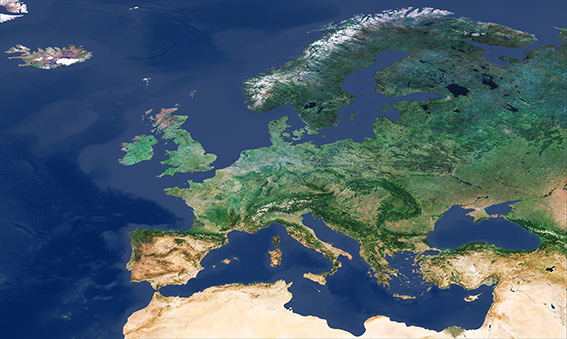Together the collaboration will advance imaging detector technology for Space science and Earth observation
Chelmsford, UK October 29 2018.
Teledyne e2v, a Teledyne Technologies company, has renewed their collaboration agreement, ten years after first establishing the Centre for Electronic Imaging (CEI) with The Open University, to continue to develop 'Space hardened' CCD and CMOS detector technologies covering x-ray, ultraviolet, visible and near-infrared wavelengths of light.
Building upon the success of the two previous successive contracts, this latest agreement has widened the scope to reflect the increase in CMOS expertise that the CEI has been able to develop and to extend the partnership to reach the entire Teledyne Imaging group.
This widening of the partnership reflects the significant hub of leading imaging technology development, from x-ray to thermal infrared that exists with Teledyne, for example, those within Teledyne DALSA (Canada) and Teledyne Imaging Sensors (California).
The CEI, known for its expertise in image sensors and radiation damage from exposure to the harsh environment of space, will undertake collaborative research projects with the Teledyne Imaging group.
Teledyne Imaging through the stewardship of Teledyne e2v will contribute in excess of £1M in funding to the CEI over a five-year period, along with the supply of technologies to support the CEI's research streams.
Key benefits of the collaboration include:
- IP development for commercialization by Teledyne
- The continued growth and strengthening of the CEI's core staff of world-leading authorities in Space imaging detectors
- Support of six PhD students in their research through funding and mentoring on common research projects
- Access to each parties development facilities
- The continued contribution to industry knowledge through the publication of research and technical papers
Dr Mark Robbins, Chief Engineer R&D of Teledyne e2v said: "The CEI has grown to become a recognized centre of expertise for silicon based imaging and we look forward to extending our activities to include other materials and technologies employed within the Teledyne Imaging group."
Prof. Andrew Holland, Professor of Optoelectronics and Director of the CEI at The Open University said: "The signing of this renewed five-year contract between the Open University and Teledyne e2v represents part of a long-standing and very productive industrial-academic collaboration by the CEI“ set to reach 20 years since its inception, to develop exciting space research avenues and doctoral training.
"We believe that this joint collaboration is an exemplar in how universities can support industry, and vice versa, helping the research within the university environment, which leads to new innovations that can end up in new products, and benefit the UK economy."
In 2017, The Open University joined another two UK groups as part of a £3M UK Space Agency funding to develop an instrument (SMILE) to research how the Earth's atmosphere responds to powerful solar winds.
The SMILE (the Solar wind Magnetosphere Ionosphere Link Explorer) program is a European Space Agency (ESA) science mission, being-delivered jointly with the Chinese Academy of Sciences and due to launch in 2022. Teledyne e2v are supplying the Soft X-ray detectors as part of this development to the CEI and shows how the strength of the collaboration as benefited the wider Space community.
Another key output from the previous contract with the CEI is that in partnership with Surrey (Surrey Satellite Technology), were awarded a contract to develop technology building blocks of a low power and high resolution CMOS image sensor tailored to address the small satellite Earth Observation (EO) market.

Cloud Free Europe From Sentinel 3
Notes to Editors
About Teledyne e2v
Teledyne e2v's innovations lead developments in healthcare, life sciences, space, transportation, defense and security, and industrial markets.
Teledyne e2v's unique approach involves listening to the market and application challenges of customers and partnering with them to provide innovative standard, semi-custom or fully-custom imaging solutions, bringing increased value to their systems.
In combination with its sister companies, Teledyne DALSA and Teledyne Imaging Sensors, three imaging powerhouses, together represent a new paradigm in the delivery of innovative imaging solutions built on unrivalled expertise and a deep technological heritage that includes capabilities across the spectrum, from infrared to x-ray imaging.
About Teledyne Imaging
Teledyne Imaging is a group of leading-edge technology companies aligned within the Teledyne brand. With unrivalled expertise across the electromagnetic spectrum and decades of experience, the group offers world-leading capabilities in sensing, signal generation and processing. The collective delivers innovative solutions to aerospace, defense, geospatial, machine and industrial vision, medical and life sciences, semiconductors and MEMs. For more information, visit teledyneimaging.com
About the CEI
The Centre for Electronic Imaging (CEI) is a research centre within the School of Physical Sciences at The Open University. It is a collaboration between The Open University and Teledyne e2v. The CEI specializes in:
- Research into scientific image sensors
- PhD student training
- Knowledge exchange between industry and university research
- Exploiting sensor opportunities in space instrumentation
